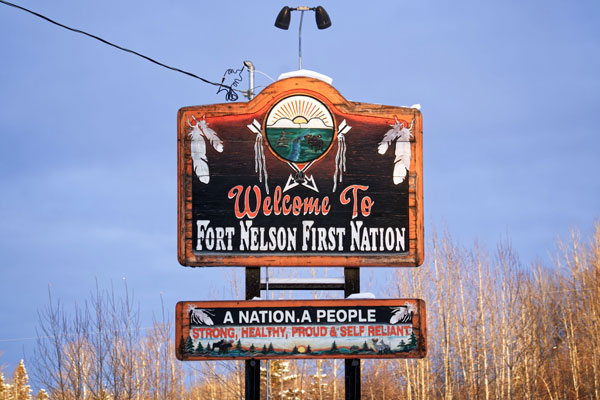The Fort Nelson First Nation has embarked on an ambitious development project it hopes will reinvigorate the economy of a remote corner of northern British Columbia.
The plan is to transform depleted gas wells on the Clarke Lake gas field into geothermal wells that will create electricity and heat greenhouses.
The Tu Deh-Kah (TDK) Geothermal project is owned and led by the FNFN through Deh Tai Corporation, its economic development arm. The word Tu Deh-Kah means “water in the form of steam” in the Dene language.
TDK is located in the northwest corner of the depleted Clarke Lake natural gas field, which is about five kilometres from FNFN.
The Clarke Lake field has been producing gas since the 1960s, says Jim Hodgson, CEO of Deh Tai LP and CEO of Clarke Lake Geothermal LP, which is the legal name of the geothermal project.
“Although it is still producing small volumes of gas, the upper zone of the field has been almost depleted,” says Hodgson.
Below the gas, however, a field of geothermal energy has been discovered.
FNFN territory, which is roughly the same area as Switzerland, is known to have a higher than average thermal gradient, meaning hot ground temperatures are available closer to the surface than in most places in Canada. This makes the industrial development of geothermal energy a good bet for the region.

Hodgson says the geothermal field was found with the help of traditional Indigenous knowledge.
FNFN members had noticed the ground below the gas pipeline was free of snow in the winter, which suggested there was something hot underneath.
In 2020, FNFN acquired the depleted gas well from the operator and in 2021 it got to work.
It stabilized the well pad, deepened the existing well, drilled a geothermal production well and completed a high-flow well test.
In 2022 FNFN developed an engineered down-hole assembly (gas separator, liner and tail pipe) to handle any natural gas the well encountered.
It successfully completed a test of the geothermal well’s long-term viability and reckoned it had a bankable project.
“At present there are a number of contractors onsite, working on sub-surface well design, surface facilities, flow-lines and tie-ins to the power system,” says Hodgson.
The geothermal project plans to drill a total of 10 wells. Several of the wells will be two-directional from the same pad, in order to minimize ground disturbance.
Hodgson says that once it is up and running, the project is expected to produce between seven and 11 megawatts of electricity.
This is how it will work.
“The hot brine will be pumped to the surface,” he says. “Through heat exchangers, some of the brine’s heat energy will be transferred to a butane or pentane working fluid.
“The fluid will vaporize to steam and drive a turbine spinning a generator to produce power. The steam is cooled through a series of cooling fans and circulates through the heat exchanger to become steam again.”
Because Fort Nelson is not currently part of the provincial electricity grid, plans call for the power that is generated by geothermal energy to be sold to BC Hydro.
Hodgson says once project funding has been arranged, construction of the project will be undertaken by an engineering, procurement and construction (EPC) or project management company.
“We hope to have the funding in place in 2024,” he says.
The geothermal project wants to achieve food security for FNFN.
“Once we have the greenhouse operation mastered, we plan on expanding to a bigger commercial operation for the area around Fort Nelson,” says Hodgson. “If we are able to develop a niche crop, or even more than one crop, it could be possible to export further north and south, because we have a large, relatively unused airport in Fort Nelson.”
The project has faced a number of challenges along the way, says Hodgson.
“It’s in a remote location, which has made it difficult to find all the materials we need – we have to bring them in from a great distance – as well as to find enough staff,” he says. “To address the staffing problem, we’re training members of the FNFN.”
Another problem has been accessing the necessary funding to get the program off the ground.
“Fortunately, we’ve been able to enlist the support of First Nations Major Projects Coalition,” says Hodgson.
The FNMPC, which has148 First Nation members across Canada, is a non-profit organization that helps its members develop projects of more than $100 million in value.



Recent Comments
comments for this post are closed